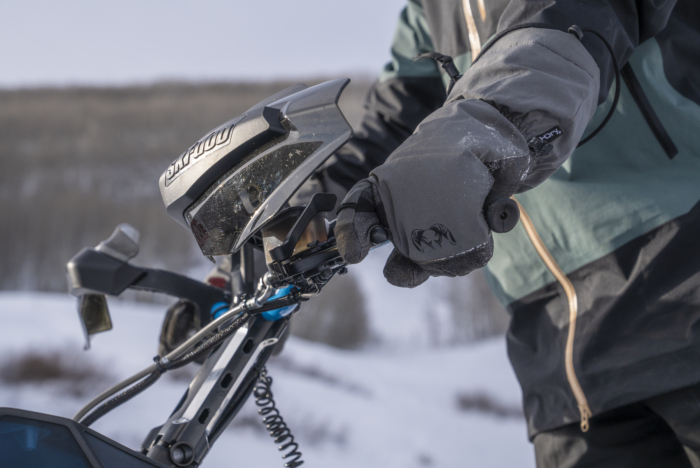While layering in the winter is a no-brainer, desert evenings and high-elevation pursuits in summer still require solid insulation. We picked eight warm-weather layers that won’t burden your pack.

Hotter months and higher daytime temperature averages don’t tell the whole story. Tuck into a desert canyon after dark or stand on a Rocky Mountain ridgeline at sunrise, and one thing becomes apparent: There are many right places and times during summer for a touch of torso warmth.
Our editor took a range of insulating layers into the chill, ready to deploy them for short periods and stow them away quickly. We tested the layers on short breaks from pedaling or paddling, hopping out of the sleeping bag to power up the morning French press, and planet gazing at 2 a.m.
Three categories make the grade for fast heating. Base layers go over a tee or bare skin for freedom of movement and less bulk when sleeping. Midlayers promise on-and-off agility in cooler settings. And shells take the edge off wind and weather to combat the chills.
How to Choose an Insulating Layer
Five criteria informed the selection of both women’s and men’s pieces, detailed in the next section from lightest to heaviest. Testers never lost sight of the “Goldilocks conundrum” — finding the right balance of warmth, weight, packability, and, of course, price.
Individual adventurers will have to weigh their own needs to select the ideal layer. But these represent some of the best warm layering options for higher-temp months. Consider the five criteria below.
Fast heating. The goal was to deal with temperatures hovering between freezing and the high 40s with quick results. Pieces that turned into Easy-Bake Ovens with no ability to shed or manage warmth within this range were at a disadvantage. So were those that lagged in heat retention.
Weight and packability. It’s easy to add a few ounces to provide reasonable durability or block light wind. But reviewers took note of thicker-shell or non-compressible insulating materials. Only a lower-tier retail price kept bulkier garments in the game.
Wearability. We favored outerwear that was easy to put on and take off. For 20 minutes of wear, they needed to go over without bunching up the base layer or T-shirt underneath.
Year-round utility. Most of the pieces flow effortlessly into late fall as warmup layers. When worn during active pursuits, winter wear is plausible, even pleasant. Evaluators coveted selections that fit active and adventure travel — where it’s possible to rappel into a New Zealand glacier or send an Andean couloir during summer.
Maintenance and durability. This is an insulation category that can’t be sacrificed. Easy fabric staining and restrictive laundering requirements turn the freedom of exploration into annoying, expensive chores. The same applies to fabrics and zippers prone to accelerated wear and premature failure.
















